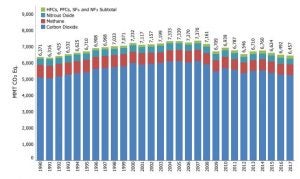Today Senator Bob Wieckowski, supported by Senate President Pro Tem Kevin de Leon, proposed what amounts to a complete overhaul of California’s cap-and-trade program after 2020 in amendments to SB 775.
Pro Tem de Leon in particular has been a tireless champion of effective climate policies that are benefiting California’s communities and making the state a global leader on climate action. California would not be where it is today without his leadership especially on investments in disadvantaged communities and strong renewable and energy efficiency targets. This particular proposal, however, contains provisions that risk undermining the enormous progress the state has made.
Rather than scrapping the current system and starting over with an unproven approach, the state should build on success, keeping what is working well while strengthening the program by doing more to address local air pollution and environmental justice.
With President Trump seeking to take the country in reverse, California’s leadership is needed now more than ever. We can – and must – forge a post-2020 program that benefits communities in the state while leveraging progress here at home to spur greater ambition globally.
What’s at risk in this bill?
We still need to do a full assessment on the language of the bill, which was amended today on the Senate floor, but we know certain key policies are at risk:
- Setting a hard ceiling on allowance prices, without any provision to ensure that California would meet its climate targets if that price ceiling were exceeded, opens a loophole that could undermine the program’s environmental integrity and California’s climate leadership. While the specific price ceiling envisioned in the bill is high enough that it may not be triggered, it represents an approach that is counter to the signature feature of the cap-and-trade program: the guarantee that California will meet its emission target.
- This price ceiling also supplants a carefully designed cost-containment system that has operated effectively and works in harmony with California’s environmental goals. For example, this bill would prohibit firms from banking allowances, denying them a key source of flexibility that allows them to reduce emissions at the lowest possible cost over time. The bill would also ban the use of offsets, which help California achieve high integrity, hard-to-reach reductions outside the cap while keeping costs under the cap in-check and extending California’s climate diplomacy.
- This bill could put California’s existing and future partnerships and linkages at risk by overhauling California’s approach to cap-and-trade and then asking partners to quickly fall in line. International linkages strengthen California’s leadership position and allow the state to leverage its program to spur greater ambition globally. Turning inward now would cede global leadership just when the world needs it most.
Today’s proposal is just one step in the complex legislative process, not a final bill proposal. Decision makers must balance many policy priorities as they navigate how to extend California’s cap-and-trade program. We believe there is plenty of room to adapt and strengthen California’s policy package while hewing to the framework that has served California well in reducing carbon pollution so far.
How California can chart a path to a strong cap-and-trade extension
California’s cap-and-trade program is working to bring carbon pollution down while the economy thrives. Even with this success, we recognize California needs to be doing more to address the very serious air pollution issues in local, environmental justice communities. EDF is committing to working on this with legislative leadership and our partners to ensure that the air is safe for all Californians to breathe wherever they live, while recognizing that climate policy – which affects issues as serious as our access to water – is critical to our continued future.
California needs policies that – in addition to improving local air quality – will continue to build on the successful reductions of GHG emissions; secure national and international partnerships vital to the state’s progress as a climate leader; and continue to support strong economic growth.
Rather than a wholesale change of a program that is meeting its goals, we should preserve what’s working and strengthen the parts that aren’t doing enough by designing and implementing policies that will directly improve air quality, especially in environmental justice communities.
This Senate bill comes as Governor Brown is urging the Legislature to pass an extension through the budget process with a two-thirds vote, and after two proposals introduced into the Assembly on how to extend the cap-and-trade program.
It is important that the Senate has now entered this debate and is recognizing the importance of passing a cap-and-trade extension with a supermajority vote. EDF looks forward to working with Senator Wieckowski, President Pro Tem de Leon, Assembly leaders, the Governor, and other stakeholders as California charts a path to a strong post-2020 climate policy.
With the Trump Administration abandoning its leadership role on climate at home and on the international stage, it is more important than ever that California continues to model successful climate policy that ensures that the state will meet its ambitious carbon pollution reduction targets, while promoting better local air quality and supporting a thriving economy.














